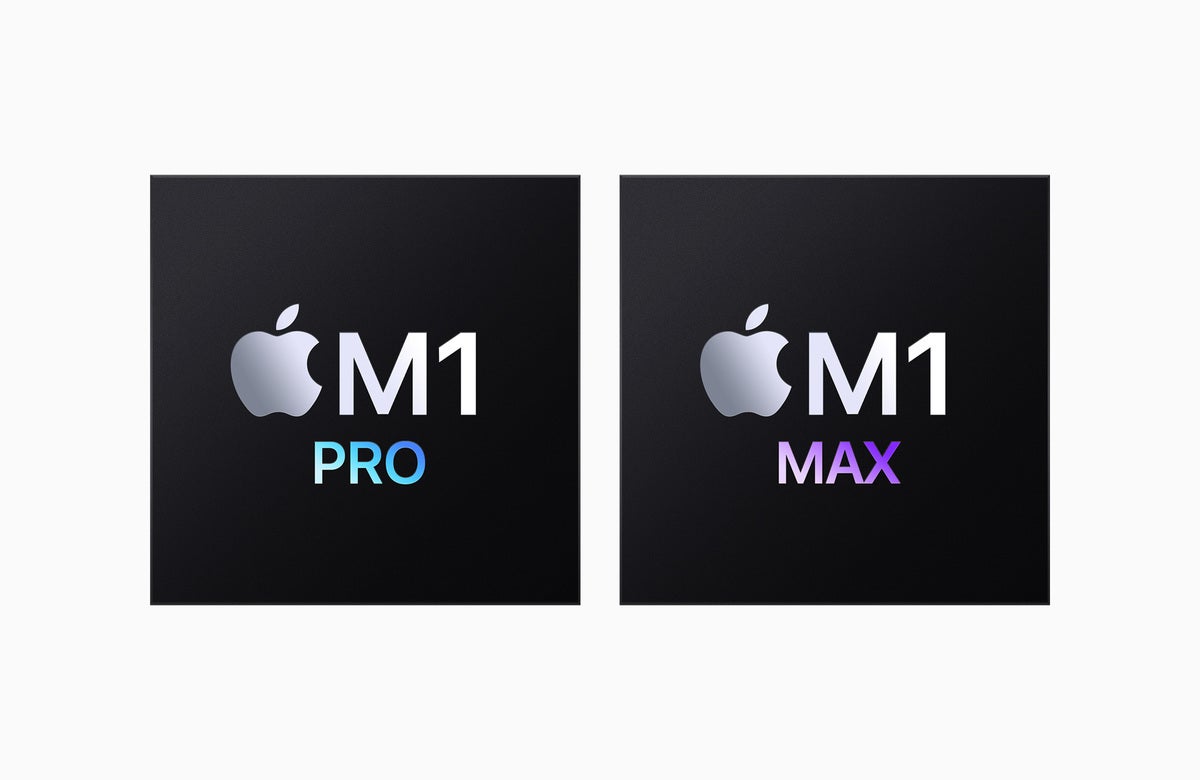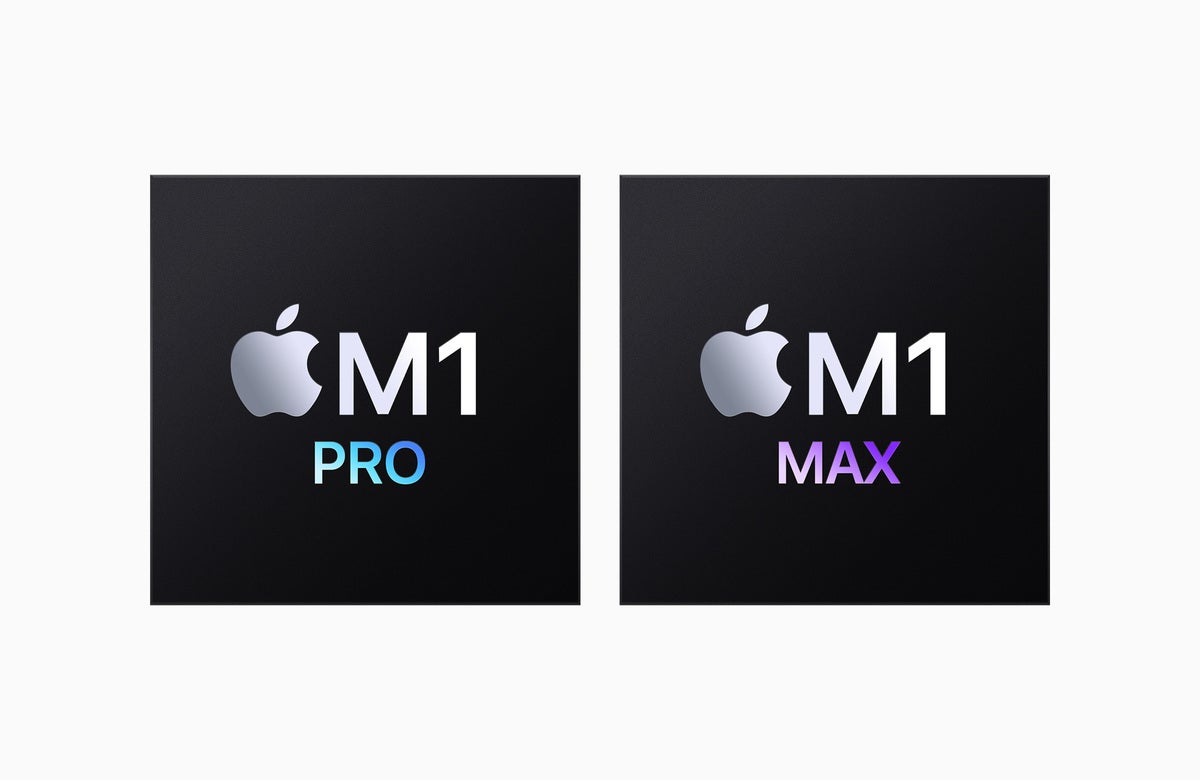
Ten years after the first Apple-designed chip, the A4 System on a Chip, debuted in the iPad and the iPhone 4, Apple introduced its M1 SoC for personal computers. Launched in November 2020, the ARM-based processor uses the same basic architecture as the A-series chips and powers a range of Apple PCs including the MacBook Air, Mac mini, MacBook Pro, and iMac. Now, with the launch of Apple’s 2021 MacBook Pro models, the hugely praised M1 chip has now been joined by the M1 Pro and M1 Max.
So what happens when you put an iPhone processor inside a Mac? You end up with the world’s highest performing mass market notebooks that, on paper at least, surpass anything you can get based on Intel or AMD.
But the new processors are decidedly not the same as iPhone chips.
Not an iPhone chip
Look and you can see the difference. While both Apple’s A-series and M-series processors are based on ARM’s reference architecture and build on what the company has learned about chip design, the Mac versions are a different beast. They are not a phone chip in a computer. Certainly it’s the same basic architecture, but developed to be slightly different between the different platforms.
The M1 Pro and M1 Max take the M1’s winning formula and improve it. These chips see Apple introduce unified memory architecture for Macs. That means GPU, CPU, and everything else share the memory pool, which delivers performance benefits, as data doesn’t need to bounce between GPU and CPU memory.
How else are they different?
Most obviously, the Mac chips are larger than the iPhone chips. But they’re different in another way. You see, while iPhone chips are built to deliver performance and battery life by making a compromise between CPU efficiency, GPU efficiency, and energy, the Mac chips take a slightly different direction, making compromises that focus more on performance. (That’s not to say energy isn’t prioritized.)
That’s why you’ll still get performance that’s just as good on a new MacBook Pro when it is using battery power as when you hook it up to the mains. You don’t get that on the high-end gaming systems Apple compares its new MacBook Pro chips to. Yes, some of those machines nudge these Macs on performance, but not by much. AnandTech has one of the best in-depth reports I’ve read detailing deeper details pertaining to these processors.
What about the efficiency cores?
Eagle-eyed viewers will have spotted that the M1 Pro and M1 Max both host fewer CPU efficiency cores than you find in the M1. I think this reflects another design decision on the part of the company: for pro users it was more important to dedicate system cores to performance.
That’s why these Macs are such high-performing machines. The remaining efficiency cores continue to do a lot of low-level utility work, but Apple clearly believes pro users want to get stuff done, and that’s why they focused on performance instead.
Every transistor is precious, and the decision to dedicate more cores to performance reflects that thinking. These designs also reflect decisions Apple’s silicon development teams took years ago.
It’s a thinking that likely illuminates how the company plans to develop Mac processors across the next several years. Apple plans this stuff. It didn’t make the decision to create M1 chips last week — it’s a plan that goes back years.
Why I’ll be searching for the Mac Pro at WWDC
Other than the larger iMac models — Pro and Max — that are now so easy to visualize, it’s the Mac Pro that stands as the next opportunity for Apple to show us what its processor development can do. Bloomberg’s Mark Gurman tweets that the Mac Pro will ship in two iterations equipped with two and four times the number of CPU and GPU cores as the M1 Max. That’s up to 40 CPU cores and 128 GPU cores on the high end, he said.
His comment has generated a wave of speculation. The mathematics of his claim suggest Apple’s future Mac Pros will feature dual or quad M1 Max processors. While it isn’t clear what performance we’ll see achieved by putting four souped up M1 variant chips inside these Macs, we know battery life will be no obstacle to performance as they are connected to mains.
We can also speculate the markets these things are aimed at: sci-tech, the highest-end photography and video projects, machine learning development, medicine, architecture, compositing, data analytics, AR development, and experience design… All these uses will benefit from the incredible performance suggested by the chip, particularly on multithreading, with a graphics architecture reinforced by OS-level integration.
This promised leap in Mac performance means Apple’s teams will also be focusing on delivering the system integration the Mac Pros need to fully exploit those chips. In itself that also suggests we should anticipate important APIs for AI, AR, movement, scene, object detection and so forth, all now likely scheduled for announcement at WWDC 2022.
While I don’t really expect the Mac Pro to appear at the developer event (though there will be jubilation if it does), we’ll be able to understand more concerning what those Macs will deliver by studying any enhancements made in macOS then.
Preaching to the choir
In this light, this year’s MacBook Pros and the M1 series chips they contain must be seen as evangelists for that next big leap. As a Mac user who has paid attention to new models since the Performa series, I couldn’t be more excited, because over the coming 12 months we’re going to see what can be accomplished when you tie tightly integrated hardware and software to computers equipped with arguably the best processors in the industry.
I imagine the creative markets will explode into new possibility, and (if claims of AR glasses are correct) new creative opportunity. That’s even before considering M2 series processors, and what happens when Apple makes the move to 3nm chips.
Please follow me on Twitter, or join me in the AppleHolic’s bar & grill and Apple Discussions groups on MeWe.



